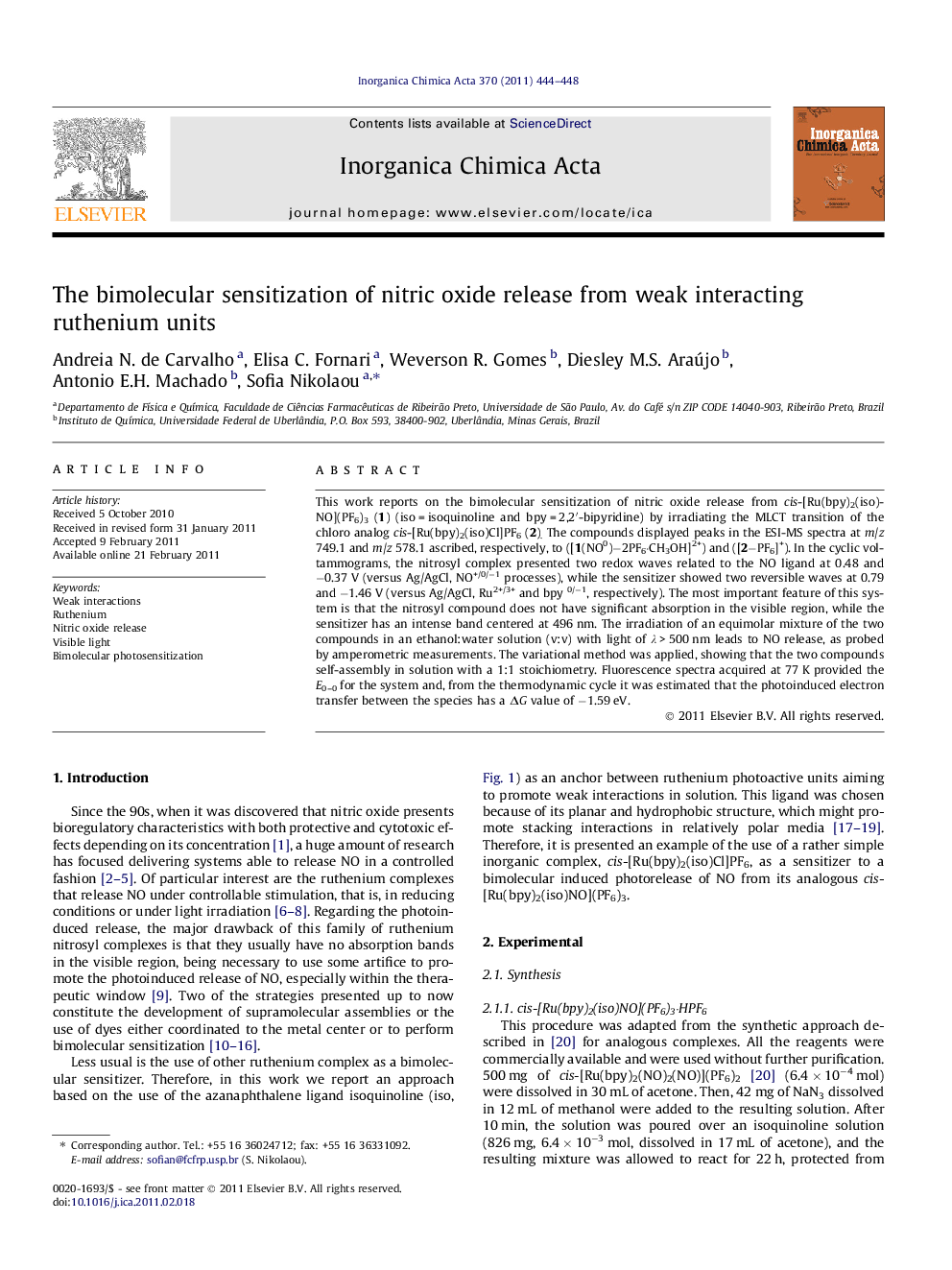| Article ID | Journal | Published Year | Pages | File Type |
|---|---|---|---|---|
| 1306314 | Inorganica Chimica Acta | 2011 | 5 Pages |
This work reports on the bimolecular sensitization of nitric oxide release from cis-[Ru(bpy)2(iso)NO](PF6)3 (1) (iso = isoquinoline and bpy = 2,2′-bipyridine) by irradiating the MLCT transition of the chloro analog cis-[Ru(bpy)2(iso)Cl]PF6 (2). The compounds displayed peaks in the ESI-MS spectra at m/z 749.1 and m/z 578.1 ascribed, respectively, to ([1(NO0)−2PF6·CH3OH]2+) and ([2−PF6]+). In the cyclic voltammograms, the nitrosyl complex presented two redox waves related to the NO ligand at 0.48 and −0.37 V (versus Ag/AgCl, NO+/0/−1 processes), while the sensitizer showed two reversible waves at 0.79 and −1.46 V (versus Ag/AgCl, Ru2+/3+ and bpy 0/−1, respectively). The most important feature of this system is that the nitrosyl compound does not have significant absorption in the visible region, while the sensitizer has an intense band centered at 496 nm. The irradiation of an equimolar mixture of the two compounds in an ethanol:water solution (v:v) with light of λ > 500 nm leads to NO release, as probed by amperometric measurements. The variational method was applied, showing that the two compounds self-assembly in solution with a 1:1 stoichiometry. Fluorescence spectra acquired at 77 K provided the E0–0 for the system and, from the thermodynamic cycle it was estimated that the photoinduced electron transfer between the species has a ΔG value of −1.59 eV.
Graphical abstractThis work reports on the bimolecular sensitization of nitric oxide release from cis-[Ru(bpy)2(iso)NO](PF6)3 (iso = isoquinoline and bpy = 2,2′-bipyridine) by irradiating the MLCT transition of cis-[Ru(bpy)2(iso)Cl]PF6. The variational method shown that the two compounds associate in solution (1:1 stoichiometry) and it was evaluated that the sensitization occurs through a photoinduced electron transfer with ΔGoxi0=-1.59eV.Figure optionsDownload full-size imageDownload as PowerPoint slideHighlights► Ruthenium complexes with azanaphthalene ligand have been developed. ► Bimolecular sensitization of NO release with visible light have been observed. ► A photoinduced electron transfer has been assigned.
